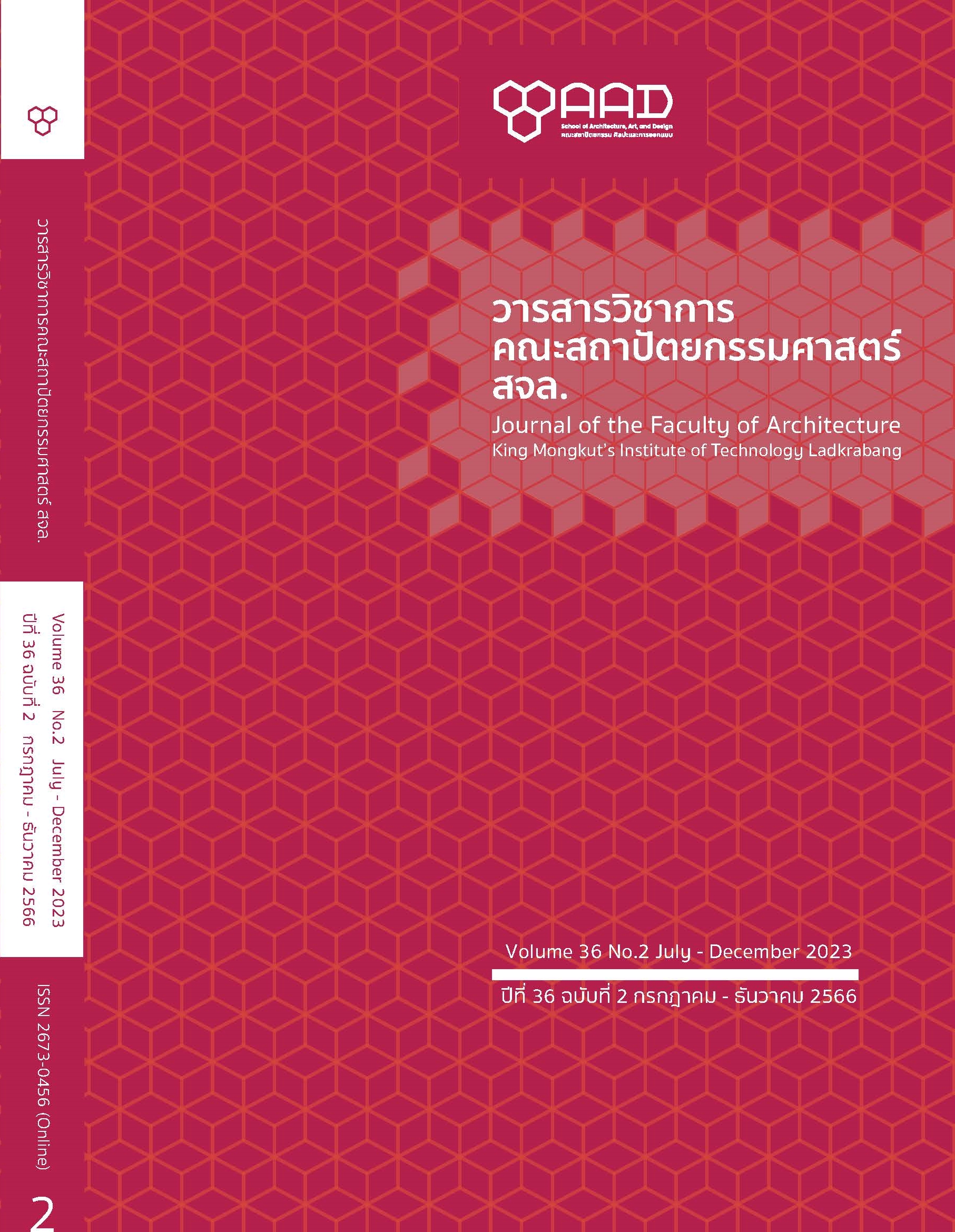Next Generation Innovators’ Readiness: A Case Study of Sriracha Innovation District Development
Main Article Content
Abstract
The establishment of Innovation Districts in Thailand represents a strategic initiative by central public sector entities to cultivate urban areas or districts that can serve as hubs for innovative companies. These entities are investigating various tools and mechanisms that can effectively bolster business growth and enhance the quality of life within these districts. The conceptual framework for this initiative is built on the development of three key assets: networking assets, economic assets, and physical assets. The successful execution of this framework hinges on social collaboration. Consequently, relevant agencies are tasked with conducting comprehensive audits to understand the existing state of these three assets before formulating any development plans for the proposed innovation district. The objective of this research is to study the readiness of the local people who might have the opportunity to become the next generation innovators as an important component of the network assets in the study area. The primary aim of this preliminary study is to gain a deeper understanding of how to enhance the readiness of these future innovators. The readiness factors under consideration include personal attributes, the 4 important characteristics of innovators, demands, and the supportive environment, all of which can contribute to the successful execution of development plans aimed at improving their readiness in the Sriracha Innovation District. This quantitative study utilized a questionnaire for data collection, with participation from 450 local workers and students in the Sriracha District. The data, analyzed using percentage statistics, revealed that the participants were not adequately prepared to contribute to the creation of innovative startups. This finding can be attributed to the fact that most participants, despite being educated and having careers, exhibited behaviors and aspirations that did not align with the typical characteristics of innovators. To address this gap, it is suggested that efforts be made to promote and develop a diverse range of skills among the Next Generation Innovators. These efforts can be tailored to two distinct groups: students and workers. The successful implementation of these skill development initiatives can significantly enhance the prospects of the first pilot project of the innovation district in Thailand.
Article Details

This work is licensed under a Creative Commons Attribution-NonCommercial-NoDerivatives 4.0 International License.
This work is licensed under a Creative Commons Attribution-NonCommercial-ShareAlike 4.0 International License.
Copyright Transfer Statement
The copyright of this article is transferred to Journal of The Faculty of Architecture King Mongkut's Institute of Technology Ladkrabang with effect if and when the article is accepted for publication. The copyright transfer covers the exclusive right to reproduce and distribute the article, including reprints, translations, photographic reproductions, electronic form (offline, online) or any other reproductions of similar nature.
The author warrants that this contribution is original and that he/she has full power to make this grant. The author signs for and accepts responsibility for releasing this material on behalf of any and all co-authors.
References
Aujirapongpan, S., Vadhanasindhu, P., Chandrachai, A., & Cooparat, P. (2010). Innovation: Meaning, types, and significance for entrepreneurship. Thammasat University Journal of Business Administration, 33(128), 49-65. (in Thai)
Chuamuangphan, Y. (2021). Factors of Successing on Thai massage professional practice of prisoner of Chieng Mai Woman Correctional Institute [Master’s thesis, Maejo University]. Maejo University Digital Archive. http://ir.mju.ac.th/dspace/bitstream/123456789/814/1/6101417010.pdf (in Thai)
Chutapruttikorn, R., & Chunarrom, S. (2018). Innovation Ecosystem: A case study of Kluaynamthai Innovative Industries District. Journal of Architectural/Planning Research and Studies, 15(2), 121-134. (in Thai)
Katz, B., & Wagner, J. (2014). The rise of innovation districts: A new geography of innovation in America. Brookings Institution. https://www.brookings.edu/wp-content/uploads/2016/07/InnovationDistricts1.pdf
Khwansomkid, B., & Phamjam, P. (2012). The usage of smartphone behavior and time spending in the Faculty of Management Science, Silapakorn University, Phechaburi IT Campus [Bachelor’s research, Silapakorn University, Management Science]. Silapakorn University Digital Archive. www.mis.ms.su.ac.th/MISMS02/PDF01//2555/GB/49.pdf (in Thai)
Kijpredarborisuthi, B. (2004). Research method in social sciences (8th ed.). Chamchuree Product. (in Thai)
Maesincee, S. (2016, December 26). Thai 4.0 in the 21st century. Thairath. https://www.thairath.co.th/news/politic/820989
Office of Knowledge Management and Development (Public Organization). (2016). New gen is now: The new generation is the power of the future. Office of Knowledge Management and Development, Policy and Planning Office.
Padon, A., & Iamtrakul, P. (2021). Grouping areas around rail transport stations based on the concept Transit Oriented Development (TOD): The Green Line (Mo Chit–Onnut) and the Blue Line (Bang Sue–Hua Lamphong). The Journal of King Mongkut's University of Technology North Bangkok, 31(3), 587-596. https://ph01.tci-thaijo.org/index.php/kmutnb-journal/article/view/245106/166683
Prop2morrow Co. Ltd. (2017, July 7). Introduce a map for 10 high potential districts. https://prop2morrow.com/ (in Thai)
Pujinda, P., & Sanit, P. (2022). Concept of the innovation district development: A case study of Yothi medical and healthcare innovation district. Journal of Architectural/Planning Research and Studies, 19(2), 81-91. (in Thai)
Sajjachayaphan, C. (2020). The competency development of employee industry in Map Ta Put Industrial Estate, Rayong Province. Journal of Industrial Business Administration, 2(2), 29-39. https://so03.tci-thaijo.org/index.php/iba/article/view/249084/167766 (in Thai)
Sakulrattanakulchai, S. (2020). Statistical analysis for planning (2nd ed.). Thammasat University Press. (in Thai)
Sutthawart, W. (2016). Development of supplementary programs to enhance the potential of innovative education [Doctoral dissertation, Silpakorn University, Management Science]. Silpakorn University Digital Archive. http://ithesis-ir.su.ac.th/dspace/handle/123456789/211 (in Thai)
Tangkitvanich, S. (2019, May 16). An innovator is not a black sheep but a major player in public policy. https://www.prachachat.net/ict/news-327450 (in Thai)
Tangpondprasert, P. (2020). M-learning: the role of education in 21st century. Journal of education silpakorn university, 18(1), 89-105. https://so02.tci-thaijo.org/index.php/suedujournal/article/view/185206 (in Thai)
Tripopsakul, T., & Pichyangkul, C. (2018). Factors influencing youth entrepreneurs in Thailand. Nida Business Journal, 22(1), 44-60. (in Thai)
Wagner, J., Davies, S., Storring, N., & Vey, J. (2017). Advancing a new wave of urban competitiveness: The role of mayors in the rise of innovation districts. Brookings Institution. https://www.brookings.edu/wp-content/uploads/2017/06/cs_20170622_uscm_handbook.pdf
Wagner, J., Katz, B., & Osha, T. (2019). The evolution of innovation districts: The new geography of global innovation. The Global Institute on Innovation District. https://www.giid.org/the-evolution-of-innovation-districts-download/


